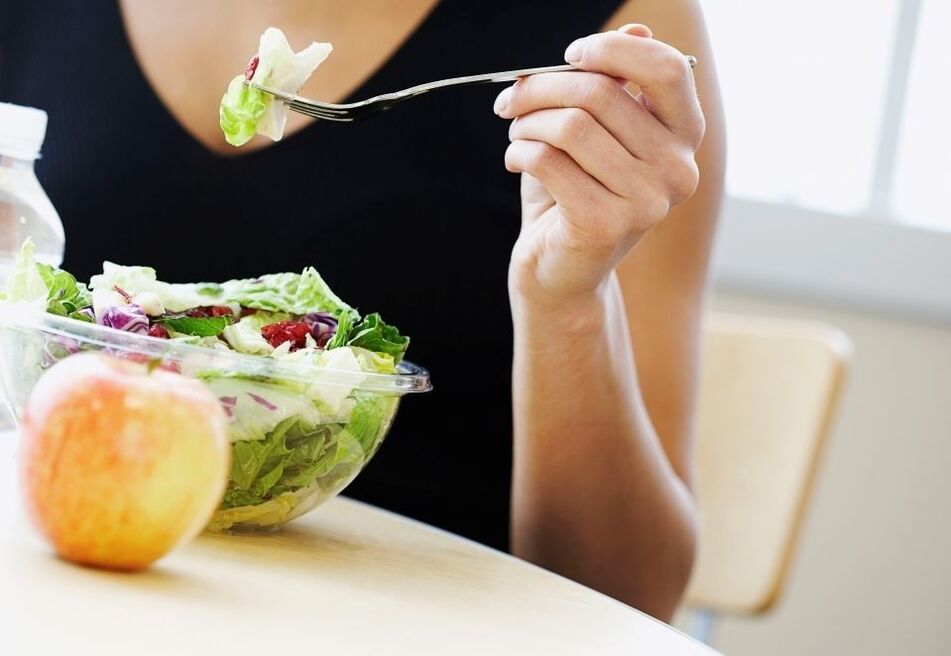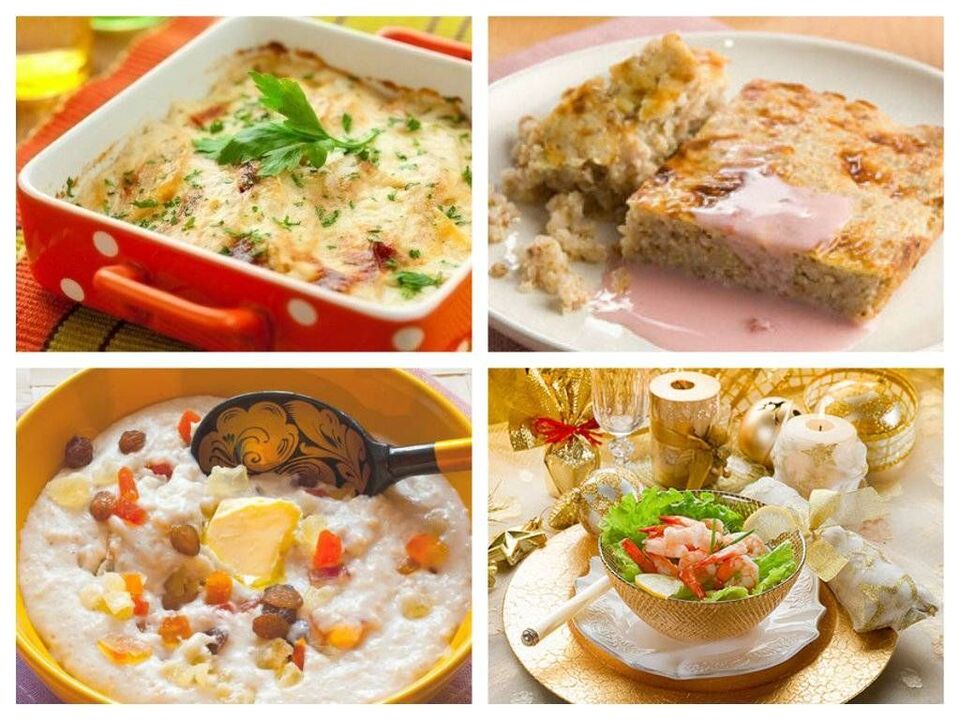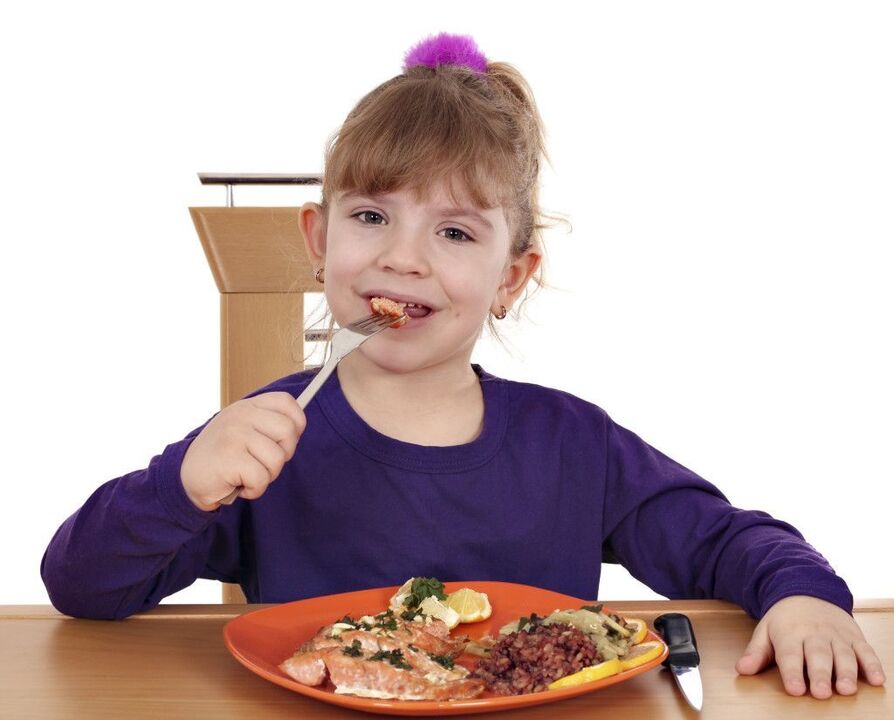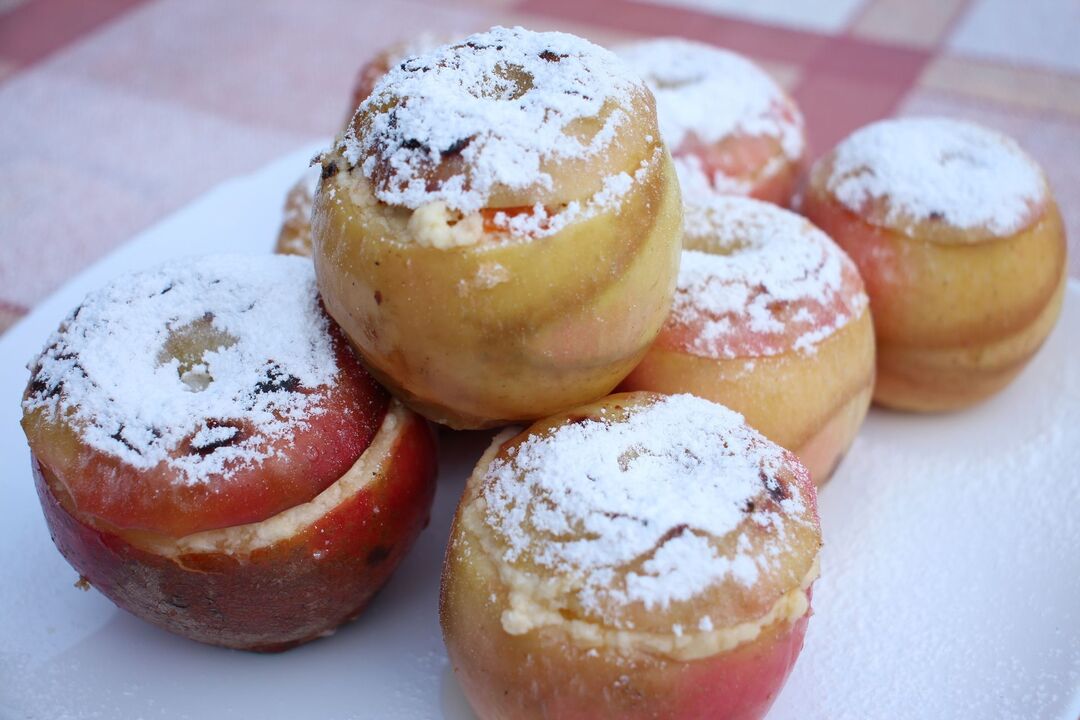Recently, the number of patients with pancreatitis is increasing. Doctors and nutritionists assure you that in order to improve your health, you must adjust your diet. The question is, what kind of pancreatitis diet can help recovery? How to eat with this disease? Are there any foods that can make the condition worse? What should you eat to improve your health?
Basic Nutritional Rules for Pancreatitis
People with pancreatitis have to eat, otherwise no medicine will help.

Experts set rules that must be followed:
- If the disease is acute, the diet should start with fasting and continue for 2 to 4 days;
- You need to eat regularly, and at the same time;
- Servings should be small;
- avoid overeating;
- reduce the amount of candy;
- Dishes should include puree products that do not cause irritation to mucous membranes;
- The daily fat standard does not exceed 80 grams;
- Reduce the amount of salt to 10 grams;
- Minimize sugar intake.
According to these rules, the daily menu is formed.
How to eat acute pancreatitis
Acute pancreatitis is a dangerous disease that requires comprehensive measures to improve the condition. It must be remembered that dietary requirements are mandatory, otherwise the condition may lead to surgical intervention.
During the first phase of treatment, you should fast for a few days. The duration of refusal of food is 2 to 4 days.
Only liquids are allowed. At this time, you can drink tea that is not strong, decoction with rose hips, and airless mineral water is appropriate.
The next step is diet number 5. Foods are low in calories and banning salt and fat, which may trigger new attacks. All dishes are cooked in liquid form. You can add a lot.
It's a good idea to put lists of useful and harmful products before chapters when compiling menus.
If strict nutritional rules are not followed, the patient's condition will not improve.
How to eat chronic pancreatitis
Nutrition for this disease should help normalize the function of the diseased organs. You should follow the advice of diet 5.
Diet tips for chronic pancreatitis:
- Food and liquids entering the body should be warm;
- Plan to have at least 5 meals a day;
- avoid overeating;
- Do not take long breaks between meals;
- reduce the amount of sugar;
- Take out fresh bread.
All dishes cooked in deep frying are strictly prohibited.

To form a proper diet, you should know a list of products that can help you restore or worsen your health.
List of Permitted and Prohibited Products:
- Bakery products: biscuits, yesterday's dry bread, biscuits;
- Boil porridge with a little milk;
- meat, steaming us in the oven, cooking chicken, turkey, lean beef;
- low-fat fish, mashed, chopped;
- First course: skim, vegetables, thick soup;
- Dairy products: all non-acidic and non-fat are acceptable;
- Vegetables: no crude fiber;
- non-acidic fruits;
- No more than 1 egg per day;
- Butter does not exceed 30 grams per day;
- No more than 2 tablespoons of vegetable oil;
- Non-acidic fruit juice diluted with water;
- The tea is not strong, you can add lemon and milk;
- Bakery products: fresh bread, muffins, puff pastry products;
- soup made with thick soup;
- fat;
- dairy products that contain a lot of fat;
- sauce;
- spices;
- fatty fish;
- fried eggs;
- Crude fiber vegetables;
- mushroom;
- beans;
- Carbonated drinks;
- Alcohol;
- coffee;
- chocolate.
If you have any doubts, it is advisable to discuss the use of certain products with your doctor.
Diet for children with pancreatitis
Parents often have a question, what kind of diet does a child with pancreatitis need? A diet that helps improve a baby's condition is almost indistinguishable from an adult menu. But there are some peculiarities to consider when feeding your baby.
Nutritional rules for children:
- heating food and drinks and feeding them with chopped dishes, such as mashed potatoes;
- The diet should contain all the components required for normal growth and development;
- Dietary restrictions must be adhered to even after elimination of acute illness;
- Prohibit children from drinking carbonated beverages;
- Fast food dishes.
If the sick child is under 3 years old, it is advisable to wipe and grind the food. Any citrus fruits, freshly squeezed juices should be removed from the diet. Berries with small seeds and rough husks should not be given to children. No need for fresh vegetables.

Children over 3 years old attend children's educational institutions and socialize with their peers. First, you need to take care of nutrition in school and kindergarten. To do this, talk to medical staff, inform teachers, educators.
The hardest thing is protecting kids from soda, chips, and other dangerous foods. When attending birthdays and children's parties, care should be taken that children do not violate dietary habits. The child needs to explain his need to limit food.
7-day menu for patients with chronic pancreatitis
For patients, it is advisable to create a menu ahead of time, which will allow you to eat a balanced diet and at the same time, your health will improve significantly.
This week's menu options:
1 day
- chicken, rosehip broth;
- oatmeal, tea;
- Pumpkin puree soup, steamed fish, jelly;
- a jar of baby food;
- Stewed zucchini, carrots, chicken tenders in the oven, juice;
2 days
- Rice porridge, honey tea;
- pumpkin puree, candied fruit;
- Vegetable soup puree, chicken meatballs, jelly;
- tea, biscuits;
- semolina puddings and jellies;
3 days
- oatmeal, jelly;
- Baked apples with cottage cheese, rosehip broth;
- Vegetable soup puree, steamed fish, candied fruit;
- cottage cheese, tea;
- boiled fish, tea;
Day 4
- Rice porridge, biscuits, rosehip soup;
- Pumpkin puree, tea;
- Vegetable soup, a boiled fish, mashed potatoes, candied fruit;
- honey tea, biscuits;
- Rice pudding, jelly;
Day 5
- oatmeal, tea;
- cottage cheese, baked apples, rosehip broth;
- Vegetable soup, chicken meatballs, preserves;
- tea, dry biscuits;
- Oven grilled fish, rosehip broth.
Day 6
- semolina, tea;
- Baked apples, rosehip broth;
- Vegetable soup with beef, vegetable puree, preserves;
- tea, biscuits;
- Steamed egg rolls, jelly;
Day 7
- Rice porridge, biscuits, rosehip soup;
- cheese with chopped apples, tea;
- Vegetable soup puree, chicken meatballs, jelly;
- cottage cheese, tea, biscuits;
- Semolina pudding, jelly.
Knowing the basic requirements of the dishes, you can make your own menu.
pancreatitis recipes

Once you know the basic rules of your diet, you can change the menu. Due to food restrictions, you want to please yourself with something delicious. Nutritionists have developed special dishes that can be eaten with pancreatitis.
Recipe for Baked Apples:
- In a washed apple, remove the core, being careful not to pierce the bottom of the fruit.
- Put honey in apples.
- Add cinnamon on top.
- Bake in the oven.
- cool down.
Beet Salad Recipe:
- Cook 1 medium beet, cool and chop with a grater.
- 2 sweet variety apples, peeled and diced into small cubes.
- Grate the walnuts on a grater, about a tablespoon.
- Combine all ingredients, mix, and add a pinch of salt.
- Fill with olive oil.

Berry Jelly Semolina Pudding Recipe:
- Prepare semolina with water, pour into deep molds and let cool.
- Pour strawberries into a small amount of water, bring to a boil, remove, chop, and put back into stock.
- Pour in the sugar and heat to a boil.
- To prepare the starch, stir with cold water, pour carefully into the strawberry soup, bring to a boil, do not boil. Remove from heat and cool.
- To serve, dice the thick semolina pudding and drizzle with jelly.
Any diet can be complemented with delicious healthy dishes if desired.
We recommend a video on what foods are allowed and forbidden for pancreatitis:
Pancreatitis is a common condition that requires a strict diet to treat. To do this, you need to know which foods are edible and which are not. You should follow the cooking rules, general advice on nutrition.
Types of Pancreatitis
The most general classification of pancreatitis is based on the nature of the course: acute onset or chronic chronic pancreatitis with periodic recurrences. The two forms have different severity of symptoms and require different treatments.
acute pancreatitis
The inflammatory process of acute pancreatitis develops very rapidly and is always accompanied by severe pain. In most cases, the disease occurs after heavy drinking or eating a lot of fatty foods. Sometimes acute hepatic colic attacks precede exacerbations.
Symptoms of acute pancreatitis:
- Severe pain in left flank, radiating to other organs. Pain attacks last about half an hour to an hour. The pain is especially intense when lying on your back. Attacks worsen after eating, especially fried and spicy, and any alcoholic beverages.
- Vomiting, usually violent, biliary, and bitter. Nausea that persists that doesn't go away after vomiting.
- Low or high heat.
- Occasionally, yellowing of the protein in the eye is observed due to obstruction of bile outflow, and rarely - the skin is yellowish.
- In some cases, the pain syndrome is accompanied by heartburn and bloating.
An attack of acute pancreatitis requires immediate medical attention. Painkillers only bring temporary relief, but do not affect the cause of the inflammation. Without qualified assistance, the risk of serious complications increases rapidly: infection of inflamed tissue, necrosis, and abscesses.
Severe stages of acute pancreatitis can lead to shock and multiple organ failure.
chronic pancreatitis
If, after an episode of acute pancreatitis, a person does not follow their doctor's advice and continues to drink alcohol and eat unhealthy foods, the disease is likely to become chronic. Chronic pancreatitis develops into significant damage to the pancreas during the first episode of the disease.
The disease is characterized by progressive pathological changes in the cellular structure of the pancreas. Over time, it begins to lose its primary function - producing the enzymes necessary to digest food. Exocrine insufficiency is manifested in:
- diarrhea
- bloating,
- Changes in the nature of stools - due to the high amount of fat in them, they can become sticky and difficult to wash off the toilet walls.
Chronic pancreatitis can be asymptomatic for a long time: acute pain occurs when the pancreas has obvious pathological changes. During an attack, chronic pancreatitis presents with the same symptoms as acute:
- severe back pain,
- nausea,
- Vomit,
- Intestinal disease.
Diagnosis is based on ultrasound, computed tomography, or magnetic resonance imaging. During the study period, narrowed pancreatic ducts are often found to be due to the formation of stones - calcifications - in them. The hardware technology can also detect cysts in areas of atrophied tissue. Laboratory blood tests for chronic pancreatitis are not very informative.
Pancreatic insufficiency was determined by stool analysis. If they contain a specific enzyme -- pancreatic elastase -- they can be diagnosed with "chronic pancreatitis. "
Importance of enzymes in digestion
The functions of the human body are provided by a complex system of interconnected and interdependent biochemical reactions. Thanks to special protein compounds - enzymes or enzymes - all these reactions are accelerated, providing a fast metabolism. Enzymes work very selectively: each of them can only initiate, speed up or slow down one reaction.
Digestion is based on the work of digestive enzymes. Their main task is to make the assimilation process of energy fast and efficient. Enzymes break down food components (proteins, fats and carbohydrates) into absorbable substances. At the same time, the amount of enzymes produced depends on the quantity and quality of the food eaten.
Digestion of food begins in the mouth. Food that has been crushed into small pieces by the teeth is mixed with saliva containing alpha-amylase. The better we chew our food, the easier it is for salivary gland enzymes to convert starch molecules into soluble sugars and facilitate further processing.
After initial processing, the food passes through the esophagus and into the stomach, where the gastric enzymes pepsin and hydrochloric acid come into play. These substances produce gastric juice, which:
- Provides antibacterial protection to the body;
- Stimulates the production of pancreatic hormones;
- Regulate gastric motility;
- Breaks down fat and performs many other functions.
In addition to pepsin, which is responsible for breaking down large protein molecules, other enzymes are produced in the stomach, such as:
- Gelatinase - a solvent for collagen, gelatin and other connective tissue proteins;
- lipase - an enzyme that breaks down certain fat molecules into fatty acids and monoglycerides;
- Rennin - initiates the digestion of milk proteins.
Bile plays an important role in the digestion process. It contains bile acids that stimulate the production of pancreatic secretions.
From the stomach, the food bolus is evacuated to the duodenum, where the main process of food digestion takes place. It is supplied by more than 20 pancreatic enzymes. Enzymes are contained in pancreatic juice, which is produced by the glands at about 2 liters per day.
The role of pancreatic enzymes:
- Proteases - break down proteins into amino acids;
- Nuclease - acts on DNA nucleic acids;
- Amylase - breaks starch down into simple sugars;
- Lipase - Breaks down fat into higher fatty acids and glycerol.
The enzymes of the digestive system organs, especially the pancreas, are disrupted and the whole organism is out of balance. This imbalance can lead to nausea, diarrhea, flatulence, and then anemia and malnutrition.
pancreatin deficient foods
With pancreatitis, the process by which the pancreas produces digestive enzymes is disrupted, so a person experiences stomach discomfort and pain. In this case, after the examination is completed, alternative therapy can be prescribed.
The task of treatment with enzyme preparations is to compensate for their deficiency in the body, while reducing the load on the damaged organs. In some cases, this treatment is prescribed for life.
important!The action of all enzymes starts 20-30 minutes after meals, so you need to drink them strictly in the dosage prescribed by your doctor before meals!
Modern pharmacology offers a wide variety of enzyme preparations of animal and plant origin. Some of them are only designed to fill in the gaps of a single enzyme, such as breaking down lactose or fat. There are also methods of complex effects for deficiencies of several enzymes in various organs of the digestive system.
Pancreatin is obtained from bovine or porcine organs. The pharmaceutical ingredients include the main pancreatic enzymes - amylase, lipase and trypsin. In addition to pure pancreatic enzymes, multienzyme preparations may include bile acids, sorbents, or other enzymes. All drugs are selected strictly individually, taking into account the nature of the course of the disease and the severity of symptoms.
What is the diet for pancreatitis?
In the treatment of pancreatitis, the role of nutrition is no less than that of drugs. The main goal of a prescribed diet is to restore the function of the pancreas and normalize the production of digestive enzymes.
Difficult-to-process foods can increase the burden on inflamed organs. After enjoying a hearty fried meal, the pancreas starts churning out enzymes for digestion. If the gland's ducts narrow, pancreatic juice produced in extreme patterns can build up in the gland, exacerbating the disease - and the affected pancreas begins to digest itself.
Signs that your glands are overworked include:
- Stomach is heavy after eating,
- Heartburn,
- belching
- Stomach ache.
Of course, sticking to a strict diet all the time is not easy, especially at home. People with strict dietary restrictions are forced to cook their own meals and resist the temptation to eat fried or spicy food.
It's important to understand that a single breach of the diet can lead to an acute pancreatitis flare-up with all its attendant consequences: severe pain, nausea, vomiting, and diarrhea. One failure could negate all efforts to maintain long-term remission.
Diet Rule 5: What you can and cannot eat with pancreatitis
The pancreatitis diet has many restrictions on the foods that are allowed and how they are prepared. Especially for people with pancreatic problems, one of the founders of domestic dietetics and gastroenterology, Professor I. I. Pevzner developed the No. 5 meal plan.
However, before becoming familiar with the specific provisions of this diet, it is necessary to consider the general principles of pancreatitis nutrition:
- You need to eat small servings 5 times a day;
- Exclude fried and pickled foods;
- During the acute phase of the disease, food must be crushed or wiped;
- Animal protein should dominate the diet;
- The amount of fat should not exceed 50 grams per day;
- Sugar is also strictly limited - no more than 30 grams per day;
- Products that increase flatulence - sweetened carbonated drinks, any soy, sweet apples and grapes, sweet muffins, etc. are prohibited;
- Minimize salt intake - no more than three to five grams.
important!For pancreatitis, you can eat slow carbs, while you need to monitor the ratio of nutrients in the dish. Don't be fooled by the fact that honey can replace sugar, its consumption should also be controlled. First, you definitely need a calculator. Daily calorie intake and protein, fat and carbohydrate balance need to be calculated immediately based on BMI. This information is easily found on the Internet on websites dedicated to proper nutrition and healthy lifestyles. There are various mobile apps for counting calories and nutrients.
All of these principles are taken into account in Diet No. 5, which exists in both basic and advanced versions.
The basic option applies to the recurrence of chronic pancreatitis and the acute nature of the disease. During the acute phase, the diet is more restrictive with many restrictions. It is designed to unload the pancreas and relieve symptoms of acute inflammation. During the first 3 days of the acute phase, patients are advised to fast to allow the pancreas to rest. Also, small amounts of carbohydrate foods are allowed for short periods of time over 3-7 days. The calorie content of the diet should be reduced these days and food should only be consumed in puree or semi-liquid form.
important!It's widely believed that soups, especially chicken broth, help with any digestive issues. For pancreatitis, gallbladder disease, and other gastrointestinal disorders, fatty broths are an absolute no-no! Excessive animal fat can significantly increase the load on the pancreas and prevent the condition from normalizing.
The diet consists of grains in water and vegetable soups of various grains, with the exception of millet and corn, and boiled or steamed vegetable purees. Beverages, weak tea, jelly, dried fruit preserves are permitted. Bread is only allowed to be blanched and slightly dry, and biscuits like biscuits and biscuits are allowed.
On the third day of the carbohydrate diet, gradually introduce protein products:
- lean meat broth, preferably veal, turkey or chicken breast, the meat in the broth should be minced through a meat grinder or in a blender;
- steamed egg rolls or boiled eggs;
- Steamed meat fillets with lean meat or low-fat fish;
- Cheese casseroles and souffles with minimal fat.
Diet 5 is considered to be as protective of the pancreas as possible and requires complete rest during the acute phase. The foods allowed and prohibited in the basic diet are shown in Table 1.
important!The dominance of protein foods in the diet can lead to constipation. In this case, you need to add more raw vegetables and fruits from the allowed list. For gout, prioritize plant-based protein or marine fish.
Can chronic pancreatitis be cured?
So far, no drugs have been developed to stop and reverse the processes that occur in the pancreas during chronic inflammation. Therefore, treatment aims to slow the progression of the disease and prevent it from getting worse. In later stages, when pancreatic function declines significantly, treatment is supplemented with drugs that normalize digestion and blood sugar levels. To relieve chronic pancreatitis, proton pump inhibitors, antispasmodics, pain relievers, enzymes are used, the choice of which is individualized and depends on the clinical manifestations of the disease.
An important area of prevention is the timely treatment of diseases that lead to the development of chronic pancreatitis.
Chronic pancreatitis how to eat?

Following a therapeutic diet is an effective, scientifically proven remedy to prevent emergencies. There are several modifications to the therapeutic diet for the exacerbation and remission phases. The diet used is based on the exclusion of products that stimulate increased secretion of the stomach and pancreas. Rest is very important for the pancreas to reduce inflammatory activity. In the acute phase, use the wiped version of the diet, and when in remission, use the non-mashed version.
In chronic pancreatitis, it is important to provide the body with adequate amounts of protein; the diet contains 110-120 grams of protein per day, which is slightly above physiological normal. At the same time, 60% of this amount should be animal protein. The menu includes dishes such as lean meat, poultry, fish, cottage cheese and egg whites. But instead, fats and simple carbohydrates are limited.
Nutrition for chronic pancreatitis should be regular and partial—5-6 times a day, in small portions. More Nutrition for Pancreatitis






























